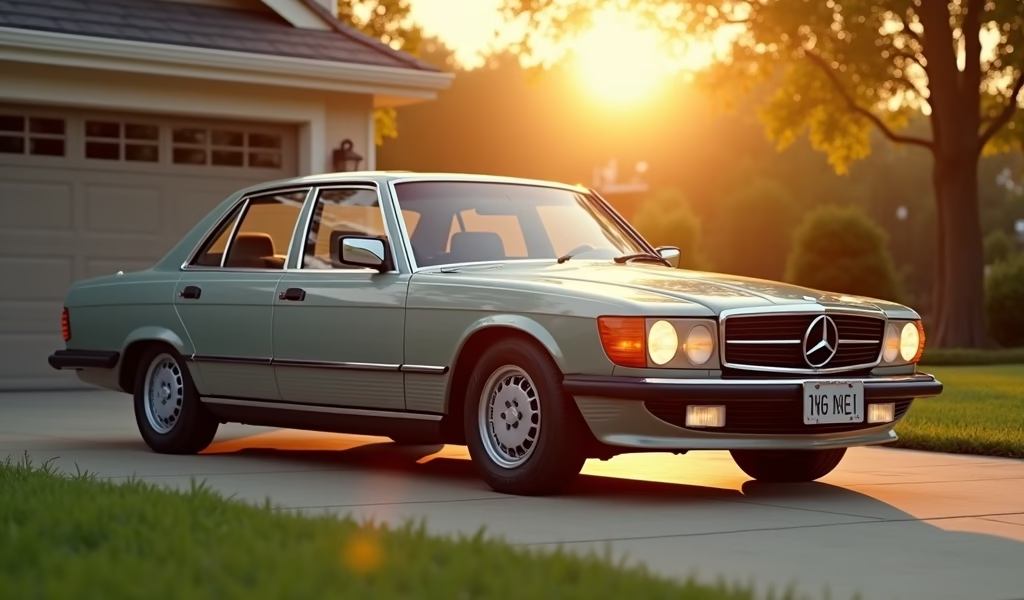Overview
This guide explores how to find the best used car by analyzing your personal needs, researching vehicle reliability, setting a realistic budget, performing thorough pre-purchase inspections, and calculating total ownership costs beyond the sticker price. It emphasizes that the “best” used car varies per individual, with 3-5 year old vehicles often representing the optimal balance between upfront cost and long-term reliability.
Table of Contents
- What is the Best Used Car to Buy?
- Understanding Your Needs: The First Step to Finding the Perfect Used Car
- Researching Reliability: Finding Models That Go the Distance
- Budget Considerations: Getting the Most Value for Your Money
- The Pre-Purchase Inspection: What to Look For
- Looking Beyond the Purchase: Total Cost of Ownership
- Conclusion
- Frequently Asked Questions
What is the Best Used Car to Buy?
When it comes to answering the question “what is the best used car to buy,” there’s no one-size-fits-all solution. As a mechanic with over 15 years of experience, I’ve seen folks drive off happy in everything from compact sedans to full-sized trucks. The “best” used car depends on your specific needs, budget, and what you value most in a vehicle. However, there are proven strategies that can help you make a smart purchase decision and find a reliable pre-owned vehicle that won’t leave you stranded or break the bank with repair costs.
Finding the right used car is like solving a puzzle where your lifestyle, budget, and vehicle reliability all need to fit together perfectly. Throughout this guide, I’ll walk you through my professional approach to selecting quality used vehicles that stand the test of time. We’ll cover everything from understanding your unique driving requirements to inspecting a potential purchase like a pro.
The used car market offers tremendous value compared to buying new, with many vehicles now built to last well beyond 150,000 miles when properly maintained. Let’s dive into the five essential tips that will help you identify the best used car for your specific situation.
Understanding Your Needs: The First Step to Finding the Perfect Used Car
Before you start browsing listings or visiting dealerships, take a moment to honestly assess what you need from your vehicle. This crucial first step helps narrow down the overwhelming number of options to a manageable shortlist of vehicles that actually fit your life.
Start by considering your typical driving patterns. Do you have a long highway commute where fuel efficiency matters most? Are you navigating city streets and need something compact for tight parking? Perhaps you’re frequently driving on rough roads or in harsh weather conditions that call for all-wheel drive capabilities.
Next, think about passenger and cargo requirements. A young family might need different features than a single professional or empty-nesters. Consider questions like:
- How many passengers do you regularly transport?
- Do you need car seat compatibility or accessibility features?
- What kind of cargo do you typically carry? (Sports equipment, work tools, groceries)
- Do you need towing capacity for a boat or trailer?
Feature priorities matter too. Modern vehicles offer an array of technologies and comfort features, but used car buyers need to decide which are must-haves versus nice-to-haves. Safety features like anti-lock brakes and multiple airbags might be non-negotiable, while heated seats or premium sound systems might be optional luxuries depending on your priorities.
According to Consumer Reports, buyers who clearly define their needs before shopping are significantly more satisfied with their purchases long-term. This foundational step ensures you’re looking at the right category of vehicles from the start.

Researching Reliability: Finding Models That Go the Distance
When considering what is the best used car to buy, reliability should be at the top of your priority list. As a mechanic, I’ve seen firsthand how some models consistently outperform others in longevity and repair frequency. This is where a bit of research pays enormous dividends.
Start by examining reliability ratings from trusted sources. Organizations like Consumer Reports, J.D. Power, and the Insurance Institute for Highway Safety (IIHS) compile extensive data on vehicle dependability. These resources can help you identify which makes and models have proven track records for specific model years. Pay particular attention to data about major mechanical systems like transmissions and engines—repairs to these components can quickly exceed thousands of dollars.
Certain brands have established reputations for building durable vehicles. Toyota and Honda consistently rank among the most reliable mainstream manufacturers, with many of their models commonly reaching 200,000+ miles with proper maintenance. However, don’t dismiss other brands entirely—specific models from Mazda, Subaru, and even some American manufacturers have excellent reliability records in certain years.
Common reliability champions in different categories include:
- Compact sedans: Toyota Corolla, Honda Civic
- Midsize sedans: Toyota Camry, Honda Accord
- SUVs: Toyota RAV4, Honda CR-V, Subaru Forester
- Minivans: Honda Odyssey, Toyota Sienna
- Trucks: Toyota Tacoma, Honda Ridgeline
Beyond brand generalizations, investigate specific model years. Every vehicle line has stronger and weaker production years. For example, while the Toyota Camry is generally reliable, certain model years (like 2007) experienced more transmission issues than others. Online forums dedicated to specific vehicle models can provide valuable insights from actual owners about common problems and maintenance costs.
Don’t ignore recall information either. The National Highway Traffic Safety Administration (NHTSA) maintains a database of vehicle recalls. A history of multiple recalls doesn’t necessarily make a vehicle unreliable, but it’s worth knowing what issues have been identified and whether they’ve been addressed in the vehicle you’re considering.
When buying a used vehicle, the previous owner’s maintenance habits often matter more than the badge on the hood. A well-maintained Ford might outlast a neglected Toyota, which brings us to our next critical consideration.
Budget Considerations: Getting the Most Value for Your Money
Setting a realistic budget isn’t just about the purchase price—it’s about understanding the total financial commitment of vehicle ownership. When determining what is the best used car to buy within your budget, you need to look beyond the sticker price.
Start by establishing your maximum purchase price, keeping in mind that you’ll need to reserve funds for registration, taxes, and potentially immediate maintenance. As a general rule, your car payment (if financing) shouldn’t exceed 15% of your monthly take-home pay. This conservative approach leaves room in your budget for insurance, fuel, and inevitable repairs.
Speaking of financing, used car loans typically carry higher interest rates than new car loans. Shop around for financing before visiting dealerships—credit unions often offer competitive rates. Having pre-approval gives you negotiating leverage and a clear understanding of your actual budget.
The depreciation curve significantly impacts value. New vehicles lose 20-30% of their value in the first year, and about 60% by the five-year mark. This depreciation curve creates a sweet spot for used car buyers:
- 3-5 year old vehicles: Still relatively modern with plenty of useful life remaining, but with the steepest depreciation already absorbed by the original owner
- 6-10 year old vehicles: Significantly lower purchase prices, but potentially higher maintenance costs
- 10+ year old vehicles: Lowest initial cost, but typically require more frequent repairs and may lack modern safety features
In my professional experience, the 3-5 year range often represents the optimal balance between upfront cost and long-term reliability. These vehicles have typically completed their steepest depreciation but still retain most of their useful life when properly maintained.
Consider the vehicle’s maintenance requirements when budgeting. Some models are simply more expensive to maintain than others, regardless of reliability. European luxury brands like BMW and Mercedes typically have higher parts and labor costs than Japanese or American counterparts. Research typical maintenance schedules and costs for any model you’re considering.
Fuel economy plays a significant role in your ongoing costs. A vehicle that costs $2,000 less upfront but consumes 30% more fuel could actually be more expensive over a five-year ownership period. Use the EPA’s fuel economy website to compare potential models and estimate your annual fuel costs based on your typical driving habits.
Remember that insurance costs vary significantly between models. Before finalizing any purchase, get insurance quotes for your top contenders. Factors like repair costs, safety ratings, and theft rates all influence insurance premiums.
The Pre-Purchase Inspection: What to Look For
Once you’ve narrowed down your options based on your needs, reliability research, and budget, it’s time for the critical pre-purchase inspection. This step can save you thousands in unexpected repairs and is essential to determining what is the best used car to buy from your shortlist of candidates.
Start with a comprehensive vehicle history report from services like Carfax or AutoCheck. These reports reveal crucial information about past accidents, title status, service records, and ownership history. Red flags include salvage titles, odometer discrepancies, or a history of flood damage. While minor accidents don’t necessarily disqualify a vehicle, severe structural damage might.
When examining the exterior, look beyond cosmetic issues to structural integrity. Check panel alignment and gap consistency—uneven gaps often indicate previous collision repairs. Inspect for rust, particularly around wheel wells, door bottoms, and the undercarriage. Fresh paint that doesn’t perfectly match could signal recent bodywork.
Tire condition tells a story about both maintenance and alignment issues. Uneven tire wear might indicate alignment problems, which could point to suspension damage or neglect. Check that all tires match in brand and size, and verify adequate tread depth across the entire surface of each tire.
Inside the vehicle, assess overall condition relative to the reported mileage. Excessive wear on the driver’s seat, steering wheel, and pedals compared to the odometer reading might suggest tampering. Test every button, switch, and feature to ensure proper operation.
The engine inspection requires particular attention:
- Check fluids: Look for clean engine oil (not black or gritty), proper transmission fluid (should be red, not brown), and coolant without contamination
- Start the cold engine: Listen for unusual noises like knocking, ticking, or rattling
- Inspect belts and hoses for cracks or excessive wear
- Look for leaks under the vehicle after it’s been running
- Check for smoke from the exhaust (blue smoke indicates oil burning; white smoke might suggest coolant leaks)
During the test drive, evaluate both mechanical function and personal comfort. Drive on various road surfaces at different speeds. Check for smooth acceleration, consistent braking, and precise steering. The transmission should shift smoothly without hesitation or clunking. Listen for unusual noises when turning or going over bumps.
For the most thorough evaluation, I strongly recommend getting a professional pre-purchase inspection. For $100-200, a qualified mechanic can identify potential problems that might cost thousands to fix later. This independent assessment provides peace of mind and potentially valuable negotiating information.

Looking Beyond the Purchase: Total Cost of Ownership
Understanding the total cost of ownership (TCO) is crucial when determining what is the best used car to buy for your specific circumstances. TCO encompasses all expenses associated with vehicle ownership beyond the purchase price, and these ongoing costs can vary dramatically between models.
Fuel efficiency remains one of the most significant operating expenses. A difference of just 5 MPG between two similar vehicles can translate to hundreds of dollars annually depending on your driving habits. While hybrid and electric vehicles generally offer lower fuel/energy costs, weigh these savings against potentially higher purchase prices or battery replacement concerns in older models.
Insurance premiums vary based on multiple factors including the vehicle’s safety ratings, repair costs, theft rates, and replacement value. Sports cars and luxury vehicles typically command higher premiums than family sedans or basic economy cars. Before finalizing your purchase, get insurance quotes for your top contenders to avoid unpleasant surprises.
Maintenance requirements differ significantly between makes and models. Japanese brands like Toyota and Honda typically have lower scheduled maintenance costs than European luxury brands. However, specific model years within any brand may have known issues that require expensive repairs at predictable mileage points. Research these common failure points for any model you’re considering:
- Timing belt/chain replacement intervals and costs
- Major service intervals (30k, 60k, 90k miles)
- Common component failures specific to the model
- Availability and cost of parts
Depreciation continues even after purchasing a used vehicle, though at a slower rate than new cars experience. Some models hold their value better than others, which impacts your eventual resale or trade-in value. Brands with strong reliability reputations like Toyota typically depreciate more slowly than those with questionable reliability histories.
Tax incentives and fees vary by location and vehicle type. Some states offer reduced registration fees for fuel-efficient or electric vehicles, while others charge higher fees based on vehicle weight or value. Research your local regulations to understand these ongoing expenses.
Warranty coverage is another consideration. Some used vehicles may have remaining factory warranty coverage, while others might be eligible for extended warranties. While extended warranties add to your initial costs, they can provide valuable protection against unexpected major repairs, particularly for vehicles with complex electronics or known reliability concerns.
The Kelley Blue Book “5-Year Cost to Own” tool can provide valuable insights into comparative ownership costs between different models. This tool factors in depreciation, fuel costs, insurance, maintenance, and other expenses to give a more complete financial picture beyond the purchase price.
Conclusion
Finding what is the best used car to buy requires balancing multiple factors including your specific needs, budget constraints, reliability considerations, and long-term ownership costs. While there’s no universal “best” used car for everyone, taking a methodical approach to your search significantly increases your chances of finding the perfect vehicle for your situation.
Remember that the most expensive car isn’t always the best choice, nor is the cheapest option necessarily the most economical long-term. The true value comes from finding a reliable vehicle that meets your needs without exceeding your budget for both purchase and ownership.
Take your time with this important decision. Rush purchases often lead to buyer’s remorse or unexpected expenses. By thoroughly researching reliability histories, carefully inspecting potential purchases, and considering the total cost of ownership, you can make an informed decision that serves you well for years to come.
The perfect used car for you exists—it’s just a matter of doing your homework to find it. And once you do, proper maintenance will help ensure it remains reliable throughout your ownership. Regular oil changes, following the manufacturer’s maintenance schedule, and addressing small issues before they become big problems will maximize your vehicle’s lifespan and minimize your costs.
Frequently Asked Questions
What age of used car offers the best value?
Three to five-year-old vehicles typically offer the best balance between price and reliability. They’ve already experienced significant depreciation but still have plenty of useful life remaining.
Are certified pre-owned vehicles worth the extra cost?
Certified pre-owned vehicles often provide valuable warranty coverage and have undergone detailed inspections, making them worth considering for peace of mind. The value depends on the specific certification program and your risk tolerance.
Which brands hold their value best?
Toyota, Honda, and Subaru consistently rank among brands with the strongest resale values. Specific models like the Toyota Tacoma, Honda Civic, and Jeep Wrangler are known for exceptional value retention.
How important is a vehicle history report?
A vehicle history report is essential as it reveals critical information about past accidents, title status, and maintenance records. Never purchase a used vehicle without reviewing its history report first.
Should I avoid used cars with accident history?
Minor accidents don’t necessarily disqualify a vehicle if repairs were properly completed. However, vehicles with structural or frame damage, airbag deployments, or flood damage typically present higher risks and should be approached with caution.


Pingback: Best used cars for 2025 Maintenance Tips - knowsyourcar.com
Pingback: How to Find a Safe and Reliable Used Car - knowsyourcar.com